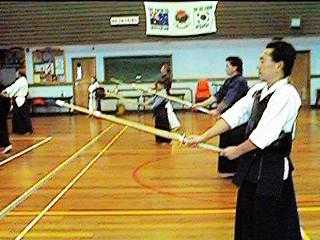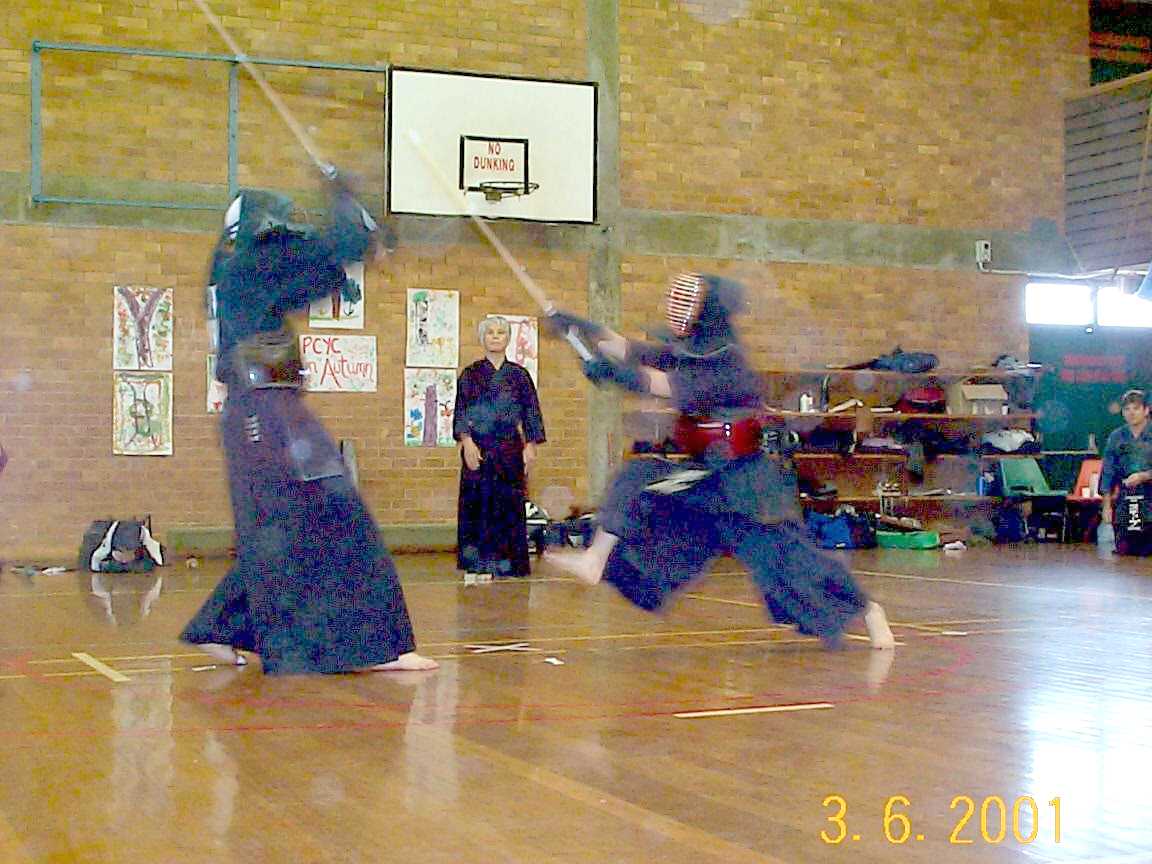





-- Kendo should not be seen as a sport but as a lifetime study. --
This is very much the philosophy of the kendo-ka (Kendo players). Practitioners who enter into a fights, primarily concerned with not being hit, will find that their adversaries will more easily score points or win the battle. In kendo, the strike is viewed as a by-product of what has come before and what is about to follow, and there is a strong emphasis placed on initiative and taking control (seme:attack).
This plays a very important part in kendo development, along with a constant sense of readiness and alertness(zanshin).
The concept of kendo:
The following is an extract from the All Japan Kendo Federation, highlighting the true concept of Kendo and the purpose of practising this art:
To mould the mind and body
To cultivate a vigorous spirit
Through correct and rigid training to strive for the improvement in the art of kendo
To hold in esteem human courtesy and honour
To associate with others with sincerity
To pursue forever the cultivation of oneself
Thus, you will be able:
To love your country and societyThe aim of kendo is for kendoka to react intuitively, with fluency and elegance. Speed and body movements are of the utmost importance in the delivery of a skilful technique. Yet the aim is not to be the first one to score a point or to win in the kendo practice, but to work together, striving towards good technique, giving and taking along the way. Only in competition should this philosophical aim be different.
Kendo places great emphasis on moral values, discipline and self-control.
Try to think of kendo not as a sport that you might participate in for a few years, but as a lifetime study. Mental and physical controls are of the utmost importance, since the balance of the two leads to harmony, not only in the art itself, but in your general well-being. It is for this reason that there are four deep-rooted mental hurdles that kendoka must overcome:
Fear, doubt, surprise and confusion.
Collectively, these are known as the four poisons of kendo.
In comparison to Olympic fencing, where a point is scored simply by making contact with the target, in kendo several elements are required in order for the essential winning point to be scored. These include:
A very important part of kendo training is zanshin, which translates as "good awareness or remaining posture" - that is, of the opponent and the continuing element of battle. It is the ability to take in the environment, being sensitive to any threat or other factors that could lead to injury, even death. Zanshin enables kendoka to attain a heightened ability and awareness, thus to react instantaneously to minimise risk.
Benefits of Kendo
The benefits derived from learning kendo affect many aspects of your everyday life. These include:
* transcribed from "Martial Arts."
Some Kendo terms:
onegai-shimasu (before practice) : Please teach me.